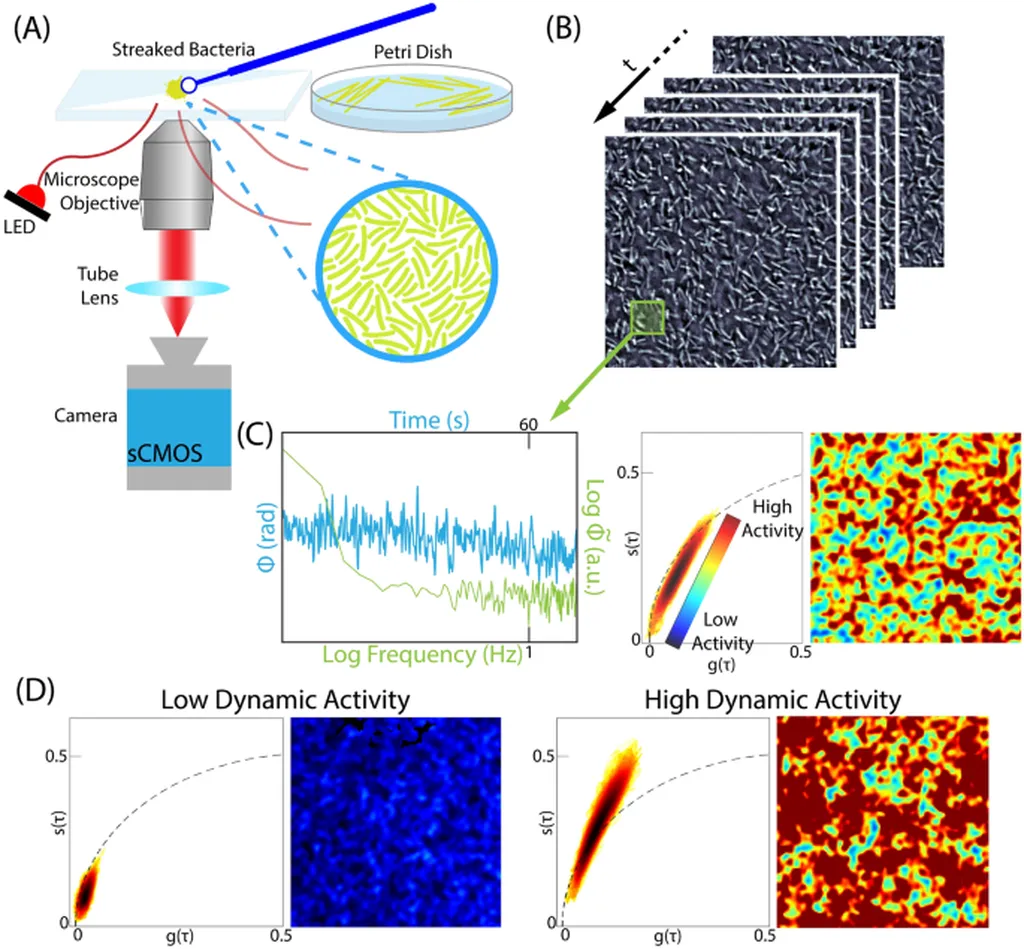In the quest to unravel the mysteries of plant roots and their interactions with microbes, a team of researchers led by Daisong Pan from the Department of Physics at the University of California has made a significant breakthrough. Their work, published in the journal *Scientific Reports* (translated from the original Chinese title), introduces a novel approach to imaging plant roots and microbes in their natural environment without the need for labels, a technique that could have profound implications for sustainable agriculture and the energy sector.
The challenge of studying roots has long been hampered by the difficulty of imaging these subterranean structures in situ. Traditional methods often require invasive procedures that can alter the very processes scientists are trying to observe. Pan and his team have circumvented this issue by employing microfabricated ecosystems (EcoFABs) that provide optical access to growing roots. Coupled with advanced nonlinear multimodal microscopy techniques, specifically third-harmonic generation (THG) and three-photon fluorescence (3PF), the researchers have achieved unprecedented label-free, in situ imaging of live roots and microbes at high spatiotemporal resolution.
“This technique allows us to see the root structures and their interactions with microbes in a way that was previously not possible,” Pan explained. “We can now observe key plant root structures like the vasculature, Casparian strips, and even subcellular features such as nuclear envelopes and nucleoli, all without the need for any labels.”
The implications of this research are vast. For the energy sector, understanding root biology and root-microbe interactions can lead to the development of more efficient and sustainable bioenergy crops. Plants with enhanced root systems can better access nutrients and water, leading to improved growth and yield. Moreover, the ability to study these interactions in situ can accelerate the discovery of beneficial microbes that can be harnessed to improve plant health and productivity.
One of the most exciting aspects of this research is the potential for single-bacterium tracking and subcellular imaging of fungal spores and hyphae in the rhizosphere. “By visualizing these microbes in their natural environment, we can gain insights into their roles in plant health and nutrient cycling,” Pan added. “This could open up new avenues for developing biofertilizers and biopesticides that are more effective and environmentally friendly.”
The commercial impacts of this research are also significant. The ability to image roots and microbes without labels can reduce the cost and time associated with traditional imaging techniques. This can lead to faster and more accurate screening of plant varieties and microbial strains, accelerating the development of new crops and agricultural practices that are more resilient to climate change.
As we face global challenges such as sustainable agriculture and climate change, the work of Pan and his team offers a beacon of hope. Their innovative approach to imaging plant roots and microbes not only advances our understanding of these critical processes but also paves the way for new technologies and practices that can help us build a more sustainable future. With the publication of their findings in *Scientific Reports*, the scientific community now has a powerful new tool to explore the hidden world of plant roots and their microbial partners.

